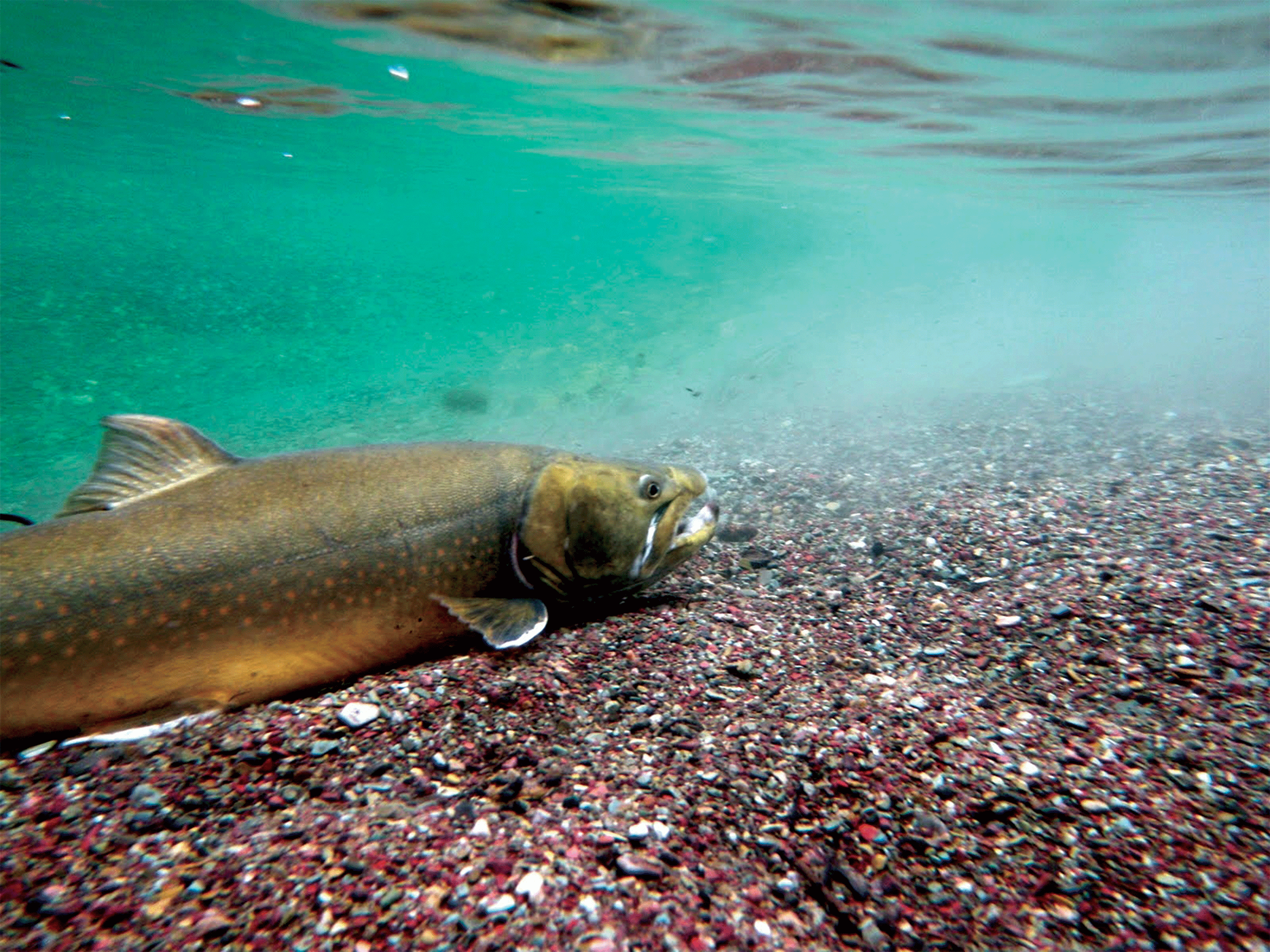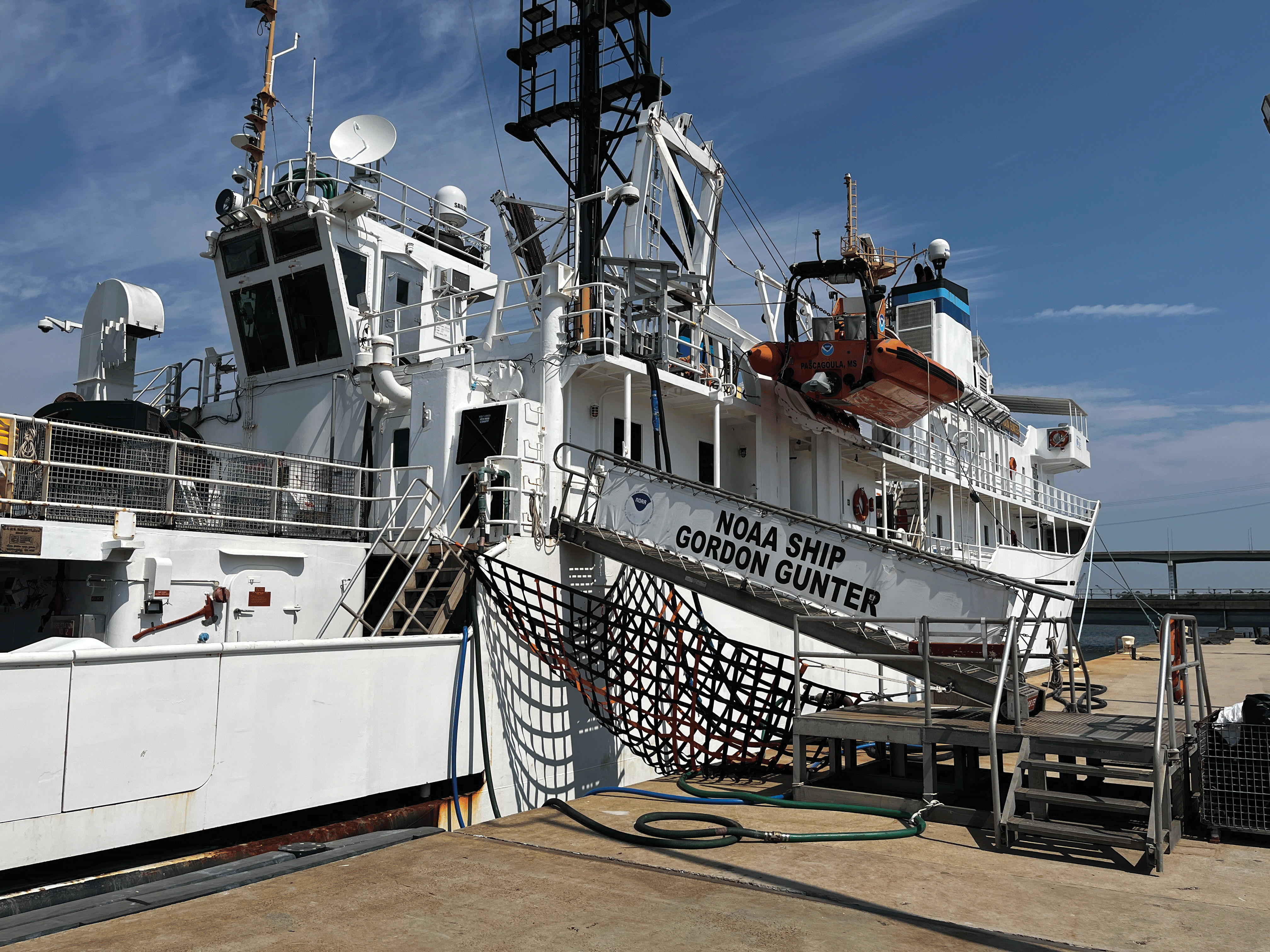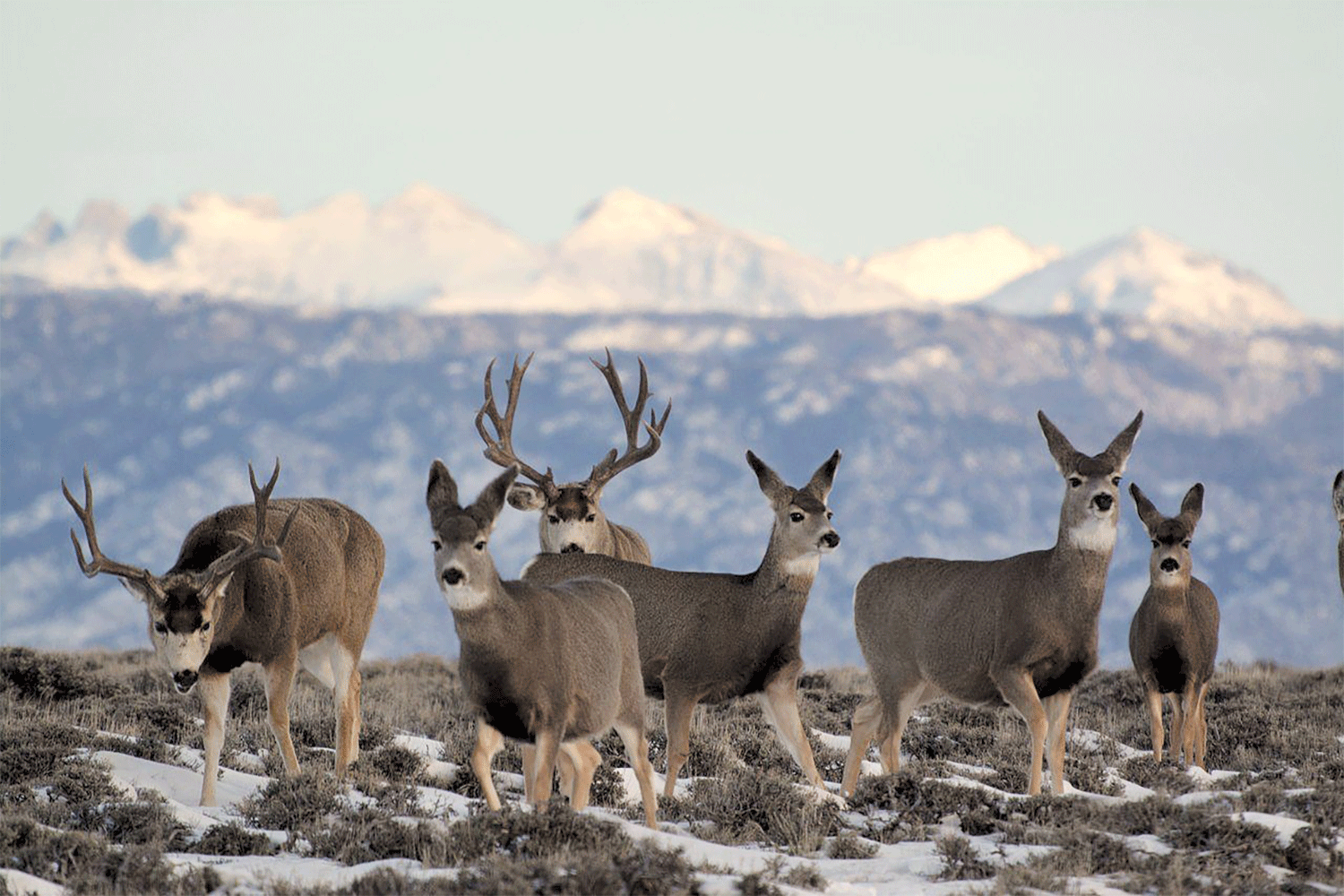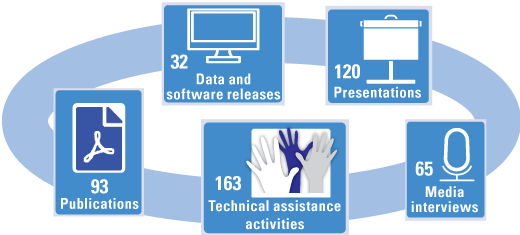U.S. Geological Survey Northern Rocky Mountain Science Center Science Highlights for Fiscal Year 2023
Links
- Document: Report (1.74 MB pdf) , HTML , XML
- Download citation as: RIS | Dublin Core
Abstract
The U.S. Geological Survey (USGS) Northern Rocky Mountain Science Center is based in Bozeman, Montana, and has field offices in Glacier National Park, Mont.; Missoula, Mont.; and Knoxville, Tennessee. Our scientists respond to the natural resource management needs of Federal, Tribal, and State partners—directly engaging in the coproduction and application of integrated, interdisciplinary science—and perform place-based research throughout the northern Rocky Mountains, including Yellowstone and Glacier National Parks and the northern Great Plains. However, the scope and implications of our research extend across the Nation. Our research themes are as follows: (1) climate change and drought, (2) species at risk, (3) habitat in changing landscapes, and (4) invasive species and wildlife disease. This Fact Sheet highlights examples of dynamic partnerships and key advances in our themes in fiscal year 2023 (October 2022–September 2023).
Connections, Partnerships, and Decision Support
Tribal engagement.—Future climate conditions in the West are likely to change the risks associated with seasonal snowpack (flooding and avalanches) and limit the benefits (water resources). To help Tribal partners plan for a changing climate, our scientists and Wyoming-Montana Water Science Center scientists produced a high-resolution snow model for the Crown of the Continent region to provide a historical, spatially detailed baseline for a snowpack and hydrology dataset to use in water resource planning. Partner workshops were held during fiscal year 2023, and attendees included water managers and scientists from the Blackfeet Nation and Confederated Salish and Kootenai Tribes and faculty from Blackfeet Community College and Salish Kootenai College. Our partnership ecologist connected a Salish Kootenai College graduate student enrolled in their inaugural Master of Science in Natural Resource Management program to the Crown of the Continent snow model output. The Confederated Salish and Kootenai Tribes plan to apply this graduate student’s research, which uses USGS-generated snow model output, to develop strategies for the sustainable management of water resources on Tribal lands.
Federal and State partners.—With the expansion of wind energy development in the United States, the need for information regarding the effects of this development on wildlife and resolutions to wildlife and renewable energy development conflicts has increased. We have expanded our partner portfolio by initiating new research in collaboration with the Department of Energy, the National Oceanic and Atmospheric Administration (NOAA), and private industry. We have initiated work on offshore wind energy projects in the Great Lakes and the Gulf of Mexico and will test if painting a single wind turbine blade black is effective in reducing avian mortality. Collectively, these projects will provide wildlife managers and energy developers with the information needed to limit the negative effects of wind energy facilities on birds and bats.
Quantitative tools advancing science and supporting our Department of the Interior partners.—The tricolored bat is native to North America and was once common throughout the eastern and central United States. The U.S. Fish and Wildlife Service (FWS) has proposed listing the tricolored bat as endangered because populations that roost in caves and mines have experienced substantial declines owing to mortality from white-nose syndrome, a lethal disease caused by a fungal pathogen. At the request of the FWS and in collaboration with USGS Fort Collins Science Center scientists from the North American Bat Monitoring Program, our research statistician and North American Bat Monitoring Program advisory core team member integrated bat acoustic, live-capture, and winter roost data for the tricolored bat. This effort may be used to produce a range map for the imperiled bat species and help inform the FWS in their decision making regarding tricolored bat conservation management.
Decision support—synthesizing science in a structured decision-making framework.—Chronic wasting disease (CWD) infects and kills some hooved mammals (ungulates) like deer, elk, and moose and has been spreading across North America for at least 20 years. There are no effective vaccines or treatments for this disease, so our scientists are developing tools to assist wildlife managers in understanding the transmission, prevention, and mitigation of CWD. Our scientists—in collaboration with the USGS Eastern Ecological Science Center, U.S. Department of Agriculture Forest Service (FS), and FWS—used a structured decision-making framework and modeling analyses to evaluate management alternatives for an upcoming FS decision on permitting the Wyoming Game and Fish Department to continue winter elk supplemental feeding on FS property in the Bridger-Teton National Forest. U.S. Geological Survey scientists worked with the FS to identify their fundamental objectives and associated performance metrics related to this decision and developed models to quantify the effects of four management alternatives on wildlife and regional economies.
Research Theme Highlights
Climate Change and Drought
Aquatic species, aquatic habitats, and ecological drought.—Freshwater fisheries are recreationally valuable and major economic drivers of local economies in the northern Rocky Mountains. Climate change threatens many of these fisheries through drought-induced reductions in streamflows and increased water temperatures. In fiscal year 2023, our scientists initiated a project, funded by the NOAA’s National Integrated Drought Information System, to develop a regional drought early warning system across the northern Rocky Mountains of Montana. The project will result in a tool providing forecasts of trout abundance based on drought risk with short-term (3–6-month) and long-term (1–2-year) outlooks. Our scientists will also evaluate the effects of different streamflows caused by management actions on trout abundance, allowing managers to identify critical instream flows and develop management strategies for a range of drought severities. Ultimately, this project will provide fisheries managers with tools to manage Montana’s popular trout fisheries in various climate change and drought conditions.
Solution-based approaches to climate adaptation.—To improve climate change vulnerability assessments for species and better inform and prioritize management actions, our scientists, in collaboration with other USGS scientists, have been developing a framework to incorporate adaptive capacity into the decision-making process. Adaptive capacity is the ability of species or populations to cope with climate based on changes in genetics or behavior or by shifting to more suitable ranges or microhabitats. Additionally, our scientists have been placing adaptive management within the Resist-Accept-Direct Framework where managers decide if they actively manage to maintain contemporary or historical ecological characteristics, do not intervene, or nudge the ecosystem toward a particular state or function. Our science can provide managers with useful frameworks at the subspecies, species, population, or ecosystem scales to inform management in climate change or ecosystem transformation scenarios.
Quantifying glacier response to climate for international and interagency partners.—Climate-induced glacier retreat can affect cold-water habitats and the species that rely on them, create flood hazards by altering glacier meltwater dynamics, and affect tourism- and recreation-based economies. To study climate-glacier dynamics, we perform USGS Benchmark Glacier Project research, which involves maintaining the longest, most continuous field-based record of glacier mass balance (gain or loss of snow and ice) in North America. During fiscal year 2023, our scientists collaborated with the USGS Alaska Climate Adaptation Science Center and USGS Alaska Science Center to engineer a data visualization platform that enables National Park Service and FS partners to access new datasets on glacier ice thickness, surface elevation change, and glacier motion. This data visualization platform and our accompanying research on glacier vulnerability enable partners to anticipate and respond to the consequences of glacier change in the western United States and Alaska.
Species at Risk
Native trout.—In the West, trout are among the most culturally, economically, and ecologically important groups of freshwater fishes. However, climate change, invasive species, and habitat modifications threaten native species like westslope cutthroat trout, Yellowstone cutthroat trout, bull trout, and Lahontan cutthroat trout. Our scientists are using long-term monitoring and climate data to assess the vulnerability of westslope cutthroat trout and federally threatened bull trout in the Rocky Mountains region and evaluate conservation management strategies. They are advancing a novel biosurveillance technology based on geochemical tracers in water and fish ear bones (otoliths) to identify invasion dynamics of lake trout, which threaten bull trout. Our scientists have also been using innovative approaches that involve a combination of field surveys, geographical information system (GIS) data, and remote sensing techniques to assess the habitat and status of federally threatened Lahontan cutthroat trout in the Great Basin. Our research to assess the vulnerability of native trout and their habitat in the West provides our partners with critical information needed to understand the status of trout fisheries, what threatens them, and what tools can be used to mitigate those threats.

Closeup of a federally threatened bull trout—one of the native trout species in Montana (photograph by the FWS).
Western bumble bees.—Pollinators support the agriculture industry and pollinate the plants that provide high-calorie, nutritious resources like seeds, nuts, and berries that humans and wildlife rely on. There has been a global decline in pollinators, and the once-common western bumble bee is no exception. The western bumble bee is a native pollinator that has undergone severe population declines and is a candidate for listing per the Endangered Species Act. Our science directly supports a FWS Species Status Assessment for the western bumble bee by evaluating the effects of climate change and pesticides on this species across the western United States. Several tools are being developed to efficiently collect baseline information on entire pollinator communities and gather key pollinator data while minimizing risks to this imperiled species.
Grizzly bears.—The Northern Rocky Mountain Science Center leads the Interagency Grizzly Bear Study Team (IGBST), an interdisciplinary group of scientists responsible for the long-term monitoring and research of grizzly bears in the Greater Yellowstone Ecosystem. The IGBST celebrated 50 years of service during fiscal year 2023, and the team’s half-century mark comes at a pivotal moment in history for grizzly bear conservation. The State of Wyoming filed a 2022 petition to delist the Yellowstone National Park grizzly bear population; the FWS is updating their Species Status Assessment; and Federal, State, and Tribal partner agencies of the Yellowstone Ecosystem Subcommittee are revising the 2016 Conservation Strategy. The IGBST met this pivotal moment by implementing major improvements to long-term grizzly bear demographic research by integrating count, survival, and reproduction data to provide more accurate estimates of Greater Yellowstone Ecosystem grizzly bear population size and vital rates. The team also completed a study that offered important insights into factors affecting grizzly bear body condition, an issue that plays a pivotal role in policy decisions.

Our scientists study grizzly bears in the Greater Yellowstone Ecosystem, including areas such as Yellowstone National Park, to inform interagency efforts toward grizzly bear conservation (photograph by the USGS).
Louisiana black bears.—Our bear research portfolio extends to other bear species and conservation standings. A subspecies of the American black bear found in the American Southeast—the Louisiana black bear—was listed as threatened per the Federal Endangered Species Act in 1992 but was delisted in 2016. Since Louisiana black bears were delisted in 2016, our scientists have been monitoring them and providing yearly results of those efforts to the Louisiana Department of Wildlife and Fisheries and the FWS. The final post-delisting monitoring report was delivered to partners during fiscal year 2023 and provided a comprehensive evaluation of 14 years of capture-recapture data, including estimates of bear population abundance, annual population growth rates, female survival rates, and recruitment.
Amphibians.—Amphibians are in global decline owing to habitat loss, introduced species, disease, and contaminants. Our science is an important tool in understanding amphibian threats and how to manage for them. In collaboration with other USGS centers, our scientists studied the effects of invasive American bullfrogs and their associated pathogens on native amphibian species in the American Southwest. Working with USGS collaborators from across the country, our scientists validated a nonlethal method to assess levels of methylmercury (which forms when bacteria interact with mercury in aquatic environments) accumulation in amphibians in 11 States. A total of 14 species were sampled, including threatened and endangered species and species proposed to be listed as threatened or endangered by the FWS. Our amphibian research evaluates the effectiveness of management actions, has the capacity to perform large-scale assessments, and provides managers with information about threats to amphibians.
Habitat in Changing Landscapes
Migratory wildlife.—Migration of ungulates is an important behavioral strategy that connects western landscapes and allows species to access high-quality forage and avoid severe weather. However, human-caused activities can introduce landscape features that may disrupt or intersect migration routes, with unknown consequences to wildlife. Our scientists documented the effects of wind turbine facilities and their construction on female pronghorn migration behavior in Wyoming. Migration science can help wildlife managers and energy developers draft informed strategies about siting decisions for new energy facilities that could limit wildlife and energy development conflicts, including in critical pronghorn habitats. Pronghorn have larger and more unpredictable migratory movements than other North American ungulates, so this research highlights our capacity to provide valuable insight into the migratory behavior of difficult-to-study wildlife species.
Energy development.—As offshore wind energy development expands, the need to understand how flying wildlife (birds, bats) interact with wind energy facilities becomes increasingly important. We have new offshore wind energy research projects in the Great Lakes and the Gulf of Mexico to address these needs. Using biological radar, our scientists will collect abundance and behavior data on flying wildlife. U.S. Geological Survey scientists, including the Northern Rocky Mountain Science Center lead, collected data for the Gulf of Mexico project in September 2023 from a NOAA research vessel to test an offshore radar prototype. Data from these projects will be used to address technical issues of collecting radar data in open-water environments, inform decisions on where to locate wind energy facilities, and provide information to wildlife and energy facility managers that can be used to limit costly wind energy and wildlife conflicts.

NOAA vessel Gordan Gunter that USGS researchers used to test their radar (mounted on top middle of ship) in the Gulf of Mexico (photograph by the USGS).
Invasive Species and Wildlife Disease
Rapid eDNA Assessment and Deployment Initiative & Network (READI-Net).—Once established, aquatic invasive species can be ecologically destructive, expensive to manage, and difficult—if not impossible—to eradicate. We lead a national USGS project called READI-Net that uses eDNA as an early detection tool for aquatic invasive species, allowing managers to initiate a rapid management response. The READI-Net project operates within the Department of the Interior’s National Early Detection and Rapid Response Framework and offers Federal, State, and Tribal agencies; municipalities; and nongovernmental organizations the technology (for example, autonomous eDNA samplers), guidance, and communication framework to properly sample, analyze, and distribute the results to end users and decision makers. During fiscal year 2023, READI-Net engaged with partners to develop an eDNA autosampler capable of taking more than 140 samples, tested another eDNA autosampler design in multiple field deployments, and worked on incorporating high-throughput techniques. With READI-Net, partners and stakeholders can quickly detect new invasive species, which is the first step to stopping an invasion as early as possible.

READI-Net eDNA autosampler (below arrow) unobtrusively positioned next to a creek in Montana as it takes samples (photograph by the USGS).
Identifying CWD transmission hotspots.—Chronic wasting disease is fatal and is freely transmitted among different species of ungulates (deer, elk, moose). There is no treatment or vaccine for the disease. Therefore, it is critical to identify hotspots of disease transmission and understand why high levels of CWD transmission are occurring on the landscape. Our scientists, in collaboration with the USGS Northern Prairie Wildlife Research Center, are addressing State, Federal, and Tribal partner needs on the Wind River Reservation in Wyoming by identifying CWD transmission hotspots in adult mule deer and white-tailed deer. U.S. Geological Survey scientists will use deer movement, density, and disease data to estimate CWD transmission hotspots. This research will not only provide information on potential disease transmission hotspots but will also identify the mule deer population component (migrating compared to nonmigrating) that may be contributing more to the high CWD prevalence in the region.

Mule deer are one of the species our scientists are studying to better understand CWD (photograph by the Bureau of Land Management).
For More Information
Visit https://www.usgs.gov/centers/norock. Or contact Claudia Regan, Center Director, U.S. Geological Survey, Northern Rocky Mountain Science Center, 2327 University Way, Suite 2, Bozeman, MT 59715, at cregan@usgs.gov.
Disclaimers
Any use of trade, firm, or product names is for descriptive purposes only and does not imply endorsement by the U.S. Government.
Although this information product, for the most part, is in the public domain, it also may contain copyrighted materials as noted in the text. Permission to reproduce copyrighted items must be secured from the copyright owner.
Suggested Citation
Wojtowicz, T., 2024, U.S. Geological Survey Northern Rocky Mountain Science Center science highlights for fiscal year 2023: U.S. Geological Survey Fact Sheet 2024–3012, 4 p., https://doi.org/10.3133/fs20243012.
ISSN: 2327-6932 (online)
ISSN: 2327-6916 (print)
| Publication type | Report |
|---|---|
| Publication Subtype | USGS Numbered Series |
| Title | U.S. Geological Survey Northern Rocky Mountain Science Center science highlights for fiscal year 2023 |
| Series title | Fact Sheet |
| Series number | 2024-3012 |
| DOI | 10.3133/fs20243012 |
| Publication Date | May 23, 2024 |
| Year Published | 2024 |
| Language | English |
| Publisher | U.S. Geological Survey |
| Publisher location | Reston VA |
| Contributing office(s) | Northern Rocky Mountain Science Center |
| Description | 4 p. |
| Online Only (Y/N) | N |



